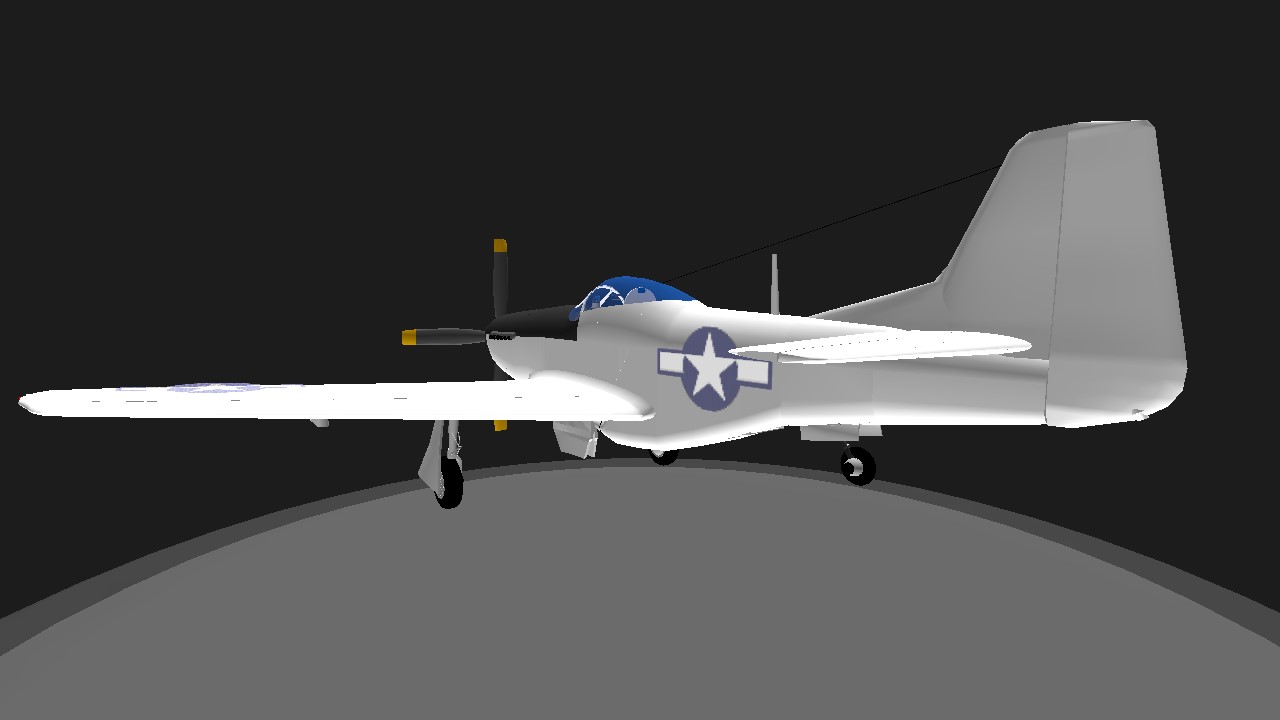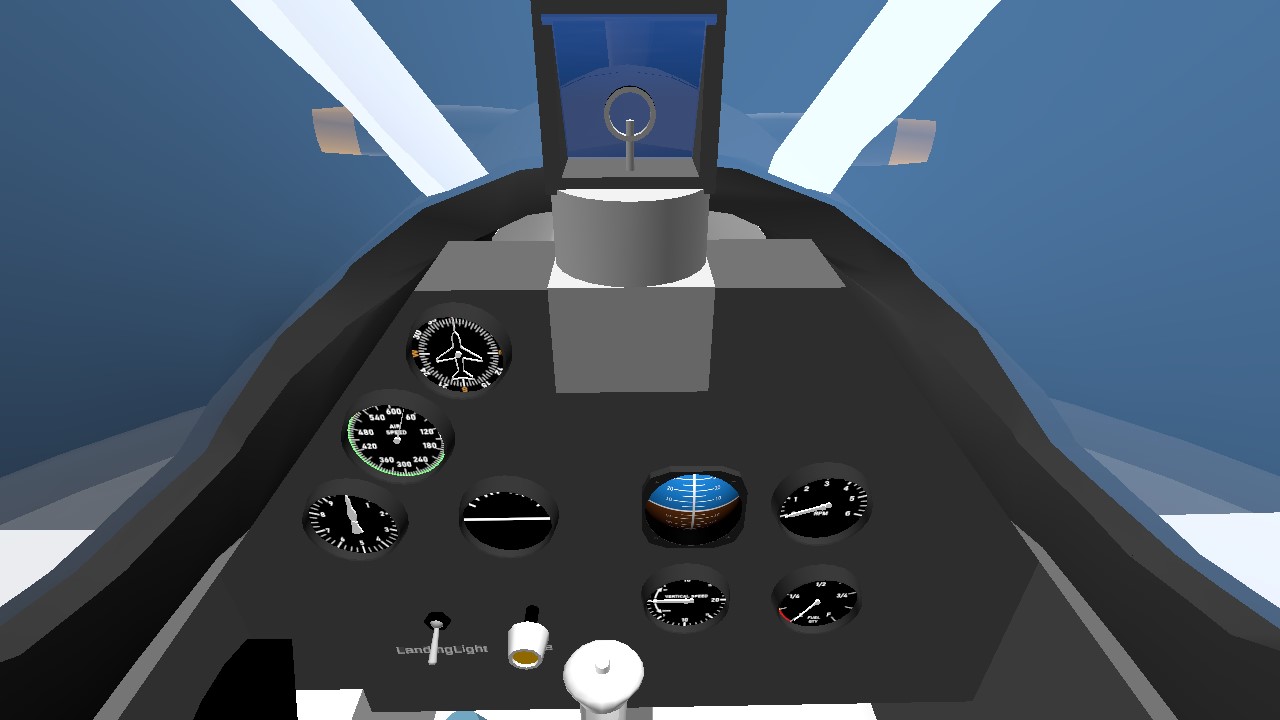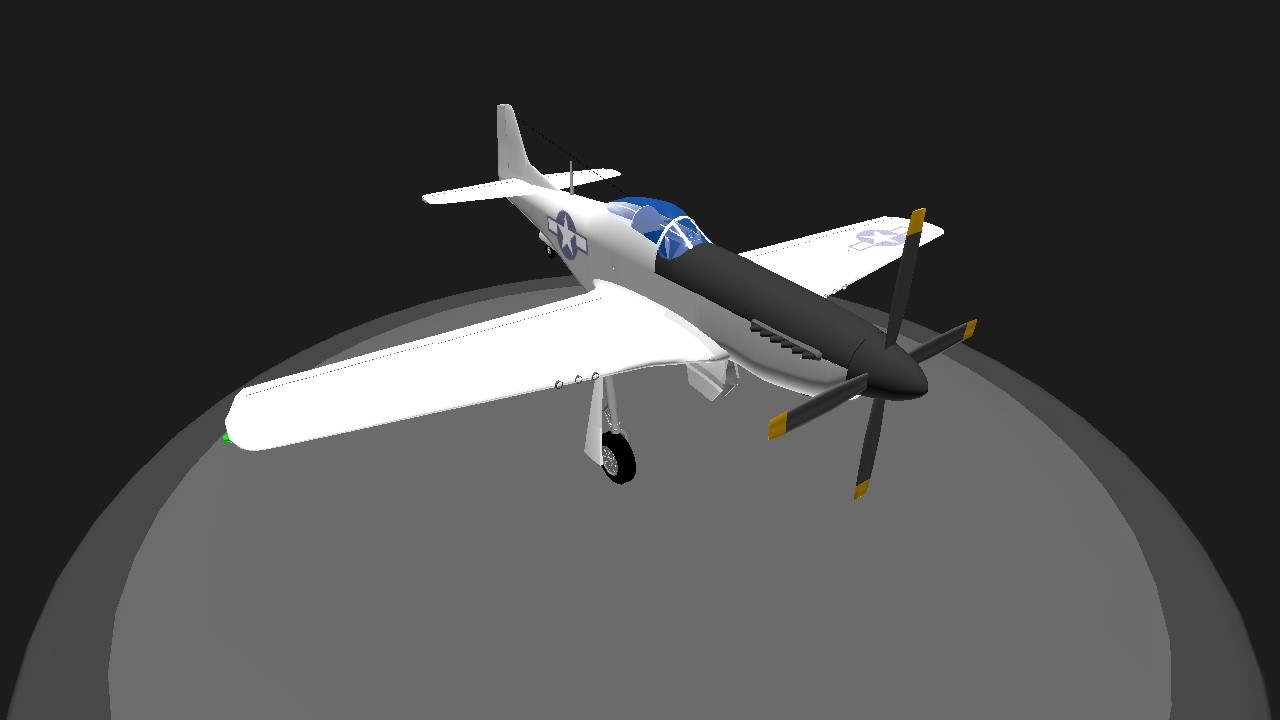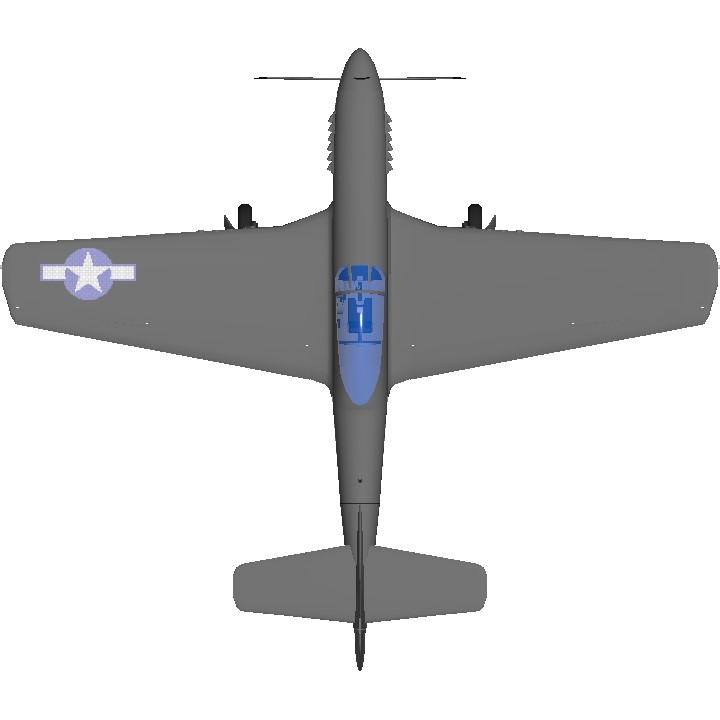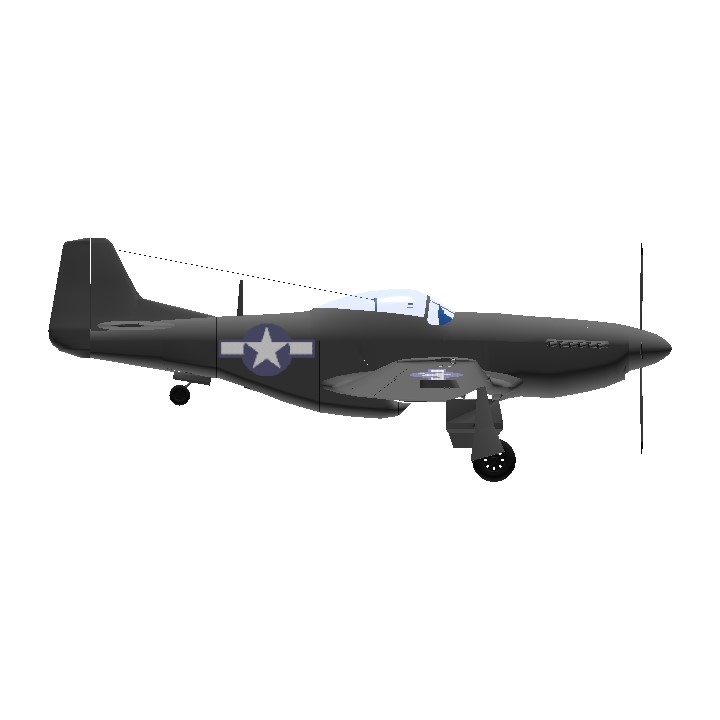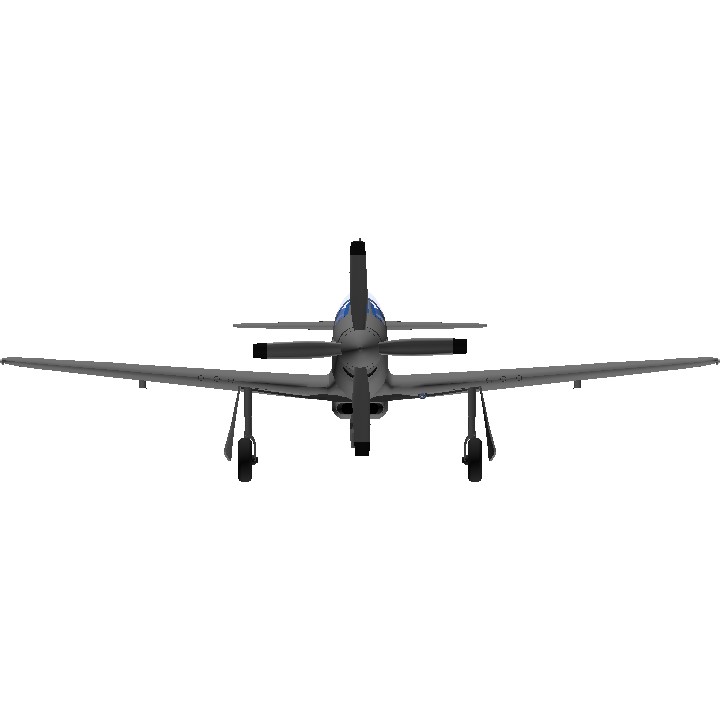The North American Aviation P-51 Mustang is an American long-range, single-seat fighter and fighter-bomber used during World War II and the Korean War, among other conflicts. The Mustang was designed in 1940 by a team headed by James H. Kindelberger of North American Aviation (NAA) in response to a requirement of the British Purchasing Commission. The commission approached NAA to build Curtiss P-40 fighters under license for the Royal Air Force (RAF). Rather than build an old design from another company, NAA proposed the design and production of a more modern fighter. The prototype NA-73X airframe was completed on 9 September 1940, 102 days after contract signing, achieving its first flight on 26 October.
AG-1) Green/Amber/Red, Bottom Wing Lights
AG-2) Gear Lights
AG-3) Red/Green Wing/White Tail lights
AG-4) Opens Visor
AG-5) Pylon (Bomb/Drop Tanks)
Specifications
General Characteristics
- Predecessor North American P-51 D Mustang
- Created On Android
- Wingspan 37.2ft (11.3m)
- Length 32.2ft (9.8m)
- Height 12.6ft (3.8m)
- Empty Weight 8,556lbs (3,881kg)
- Loaded Weight 9,872lbs (4,478kg)
Performance
- Horse Power/Weight Ratio 0.172
- Wing Loading 37.1lbs/ft2 (180.9kg/m2)
- Wing Area 266.4ft2 (24.8m2)
- Drag Points 2129
Parts
- Number of Parts 702
- Control Surfaces 0
- Performance Cost 2,556

